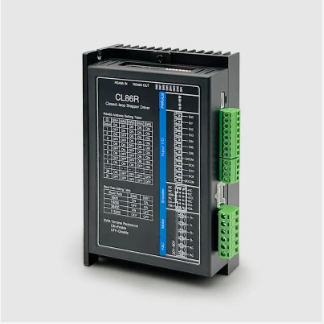Understanding Application Requirements for Servo Drive Selection
Assessing Load and Motion Control Needs
Picking out a servo drive starts with knowing what kind of load it needs to manage because this basically determines which drive works best. Loads come in different forms too – some change directions and speeds all the time (dynamic loads), while others stay pretty much the same (static loads). Getting this right matters when figuring out how much power is needed and making sure everything plays nicely together. When dealing with situations where things need to speed up or slow down quickly, look for drives built specifically for those kinds of tough motion tasks. Don't forget to check where the drive will actually work either. Whether it's going into robots, conveyor belts, or something else entirely, matching the drive's features to what the job requires makes all the difference. This approach helps guarantee that whatever gets installed can tackle whatever comes its way without breaking a sweat, delivering both dependable operation and spot on performance over time.
Defining Precision and Performance Expectations
Getting clear on how precise an application requires plays a big role in picking out the right servo drive. When accuracy matters most, finding a drive that matches those specs means systems will actually perform as they should. Look at several important performance indicators including response times, how consistent results are across cycles, and how quickly the system stabilizes after movement. These parameters really make a difference in keeping production quality high while running operations smoothly. Industry standards often point toward certain models based on real-world testing data, so checking those references helps match drives with cutting edge technology available today. A well-chosen servo drive addresses present day requirements while still having room to handle new technologies down the road without needing complete replacement.
Evaluating Technical Specifications and Compatibility
Torque, Speed, and Power Requirements
Evaluating a servo drive starts with figuring out what torque and speed specs are needed for the job at hand so we know if the drive can handle it properly. These numbers really matter because they basically decide whether the system will work well for whatever task it's supposed to perform. Power ratings become especially important when dealing with applications that run non-stop or require long duty cycles. Getting the torque and speed wrong often leads to wasted energy and breakdowns down the road. We've seen this happen plenty of times in real world situations where mismatched specs caused all sorts of problems in servo driven equipment. Bottom line? Take time to thoroughly understand exactly what the application requires before picking out a servo drive. A little extra effort upfront saves headaches later on.
Feedback Systems and Encoder Integration
When picking out servo drives, one of the most important decisions involves choosing between different feedback systems and figuring out how to integrate encoders properly. There are basically two main options on the market these days: incremental and absolute feedback systems, each works better for certain kinds of applications depending on what needs to be controlled. Encoders themselves play a huge role in getting precise position readings and maintaining consistent speeds throughout operations, which makes them essential components in any good system setup. Real world tests have demonstrated that when encoders work well with their matching servo drives, they can really boost those performance numbers across the board. Take absolute encoders paired with high end servo drives for instance they tend to give much better positioning accuracy in complicated robotics setups where millimeter level precision matters. Getting this part right from the start saves headaches later on, so taking time to understand all the options and pick the best combination based on actual application needs is absolutely worth the effort.
Motor Compatibility and Communication Protocols
Checking if motors work well with chosen servo drives matters a lot for smooth operation and getting good results from the system. When these parts don't match up properly, it can really drag down how well everything functions together. Communication protocols matter too. Things like CANopen or EtherCAT make all the difference in how different parts talk to each other within the system. Picking the right protocol isn't just nice to have either it actually makes data flow better between machines, which means fewer problems down the line. Some field tests show that using something like EtherCAT specifically gives noticeable improvements in factories where there are lots of moving parts involved. So anyone looking at servo drive options should spend time checking both motor compatibility issues and what kind of communication protocol will fit best with their setup.
Environmental and Operational Considerations
IP Ratings for Harsh Environments
IP ratings, also known as Ingress Protection ratings, play a big role when figuring out if a servo drive can handle tough environmental conditions. Basically, these ratings tell us how well the drive protects itself from dust and water intrusion, which matters a lot for machines working in places that get wet or filled with dust particles. Getting the right IP rating on a servo drive makes all the difference for keeping things running reliably over time and cutting down on unexpected breakdowns. Take IP67 rated drives for example. These bad boys can actually survive being completely submerged in water and they won't let any dust inside either. That's why many companies choose them for outdoor installations or wherever weather conditions might throw surprises their way.
Temperature Range and Cooling Requirements
Knowing what temperature range a servo drive works best in is pretty important if we want it to perform at its peak. Temperature matters vary depending on what the equipment is doing, since getting too hot can lead to breakdowns or complete system crashes. Take factories for example most have active cooling setups like fans and heatsinks to keep things from melting down, while smaller operations might get away with just passive cooling methods. Industry research shows around one quarter of all servo drive problems come down to poor cooling practices. That statistic alone should be enough to convince anyone looking at installation costs that investing in good thermal management isn't just about keeping machines running longer it actually affects how well they work day after day across different conditions.
Balancing Budget with Long-Term Value
Initial Cost vs Total Cost of Ownership
Choosing the right servo drive involves looking at more than just what's on the price tag. Sure, the initial expense stands out, but when we dig deeper, other costs start to matter too. Maintenance requirements, how much power the device consumes over time, and how long it actually lasts all play major roles in what something really costs in the long run. Take high quality drives for instance. They tend to come with bigger price tags upfront, but many companies find they save money later because these drives typically use less electricity and need fewer repairs down the road. The savings can add up pretty quickly depending on how heavily the equipment gets used day after day.
Putting money into better quality servo drives actually pays off down the road. Many factories report cutting their electricity bills and needing fewer repairs after switching to top tier models, according to various studies across different sectors. Real world experience shows manufacturers saving big on running costs too. One plant manager mentioned they saw their maintenance calls drop by almost half within six months of installation. Sure, upfront costs matter, but when looking at total spending over five years or so, those extra dollars spent initially often get eaten up by all the savings later on. Most shops find themselves regretting cheap options once breakdowns start happening every few weeks instead of every few months.
Evaluating Maintenance and Upgrade Flexibility
How easy something is to maintain plays a big role when picking out a servo drive because this affects how much time equipment sits idle and what it costs to run day to day. When companies go for drives built with maintenance in mind, they tend to fix problems faster and get things back online sooner rather than later. Plus, good documentation and solid customer support make all the difference during maintenance work. These resources help technicians know exactly what to do without wasting precious hours figuring things out. All these factors combined mean lower expenses over time, which matters a lot for businesses watching their bottom line.
Flexibility for upgrades matters a lot too. Servo drives need to handle what comes next in tech if businesses want to stay competitive. When systems are built with adaptability in mind, adding new features becomes much easier without tearing everything apart. We've seen plenty of shops roll out improvements smoothly over time instead of facing big shutdowns for complete replacements. Take one auto parts maker as an example they picked servo drives that could take on updates bit by bit. Their production got better without breaking the bank on constant expensive overhauls. Looking at real world applications shows why smart manufacturers always factor in how easy it will be to maintain and upgrade equipment when calculating the true worth of their investment in servo technology.
FAQ
What factors should I consider when selecting a servo drive?
When selecting a servo drive, consider the type of load (dynamic or static), precision and performance needs, torque and speed requirements, feedback and encoder integration, motor compatibility, communication protocols, environmental conditions, and cost of ownership versus budget.
Why is understanding IP ratings important in servo drive selection?
IP ratings are crucial because they determine the level of protection a servo drive offers against dust and water, which is essential for operations in harsh environments. Selecting the right IP rating ensures the reliability and longevity of the drive.
How does motor compatibility affect servo drive performance?
Motor compatibility affects the seamless operation and efficiency of the servo system. Proper alignment between the motor and servo drive ensures optimal performance and prevents system failures.
What is the significance of torque and speed in servo drive applications?
Torque and speed are significant because they determine the servo drive's efficiency and suitability for specific applications. Mismatches can lead to system inefficiencies and potential failures.
How can the total cost of ownership impact my servo drive decision?
The total cost of ownership includes factors like maintenance, energy consumption, and lifespan. A higher upfront cost might lead to longer-term savings due to lower operational costs, making it a vital consideration in the selection process.
Table of Contents
- Understanding Application Requirements for Servo Drive Selection
- Evaluating Technical Specifications and Compatibility
- Environmental and Operational Considerations
- Balancing Budget with Long-Term Value
-
FAQ
- What factors should I consider when selecting a servo drive?
- Why is understanding IP ratings important in servo drive selection?
- How does motor compatibility affect servo drive performance?
- What is the significance of torque and speed in servo drive applications?
- How can the total cost of ownership impact my servo drive decision?

